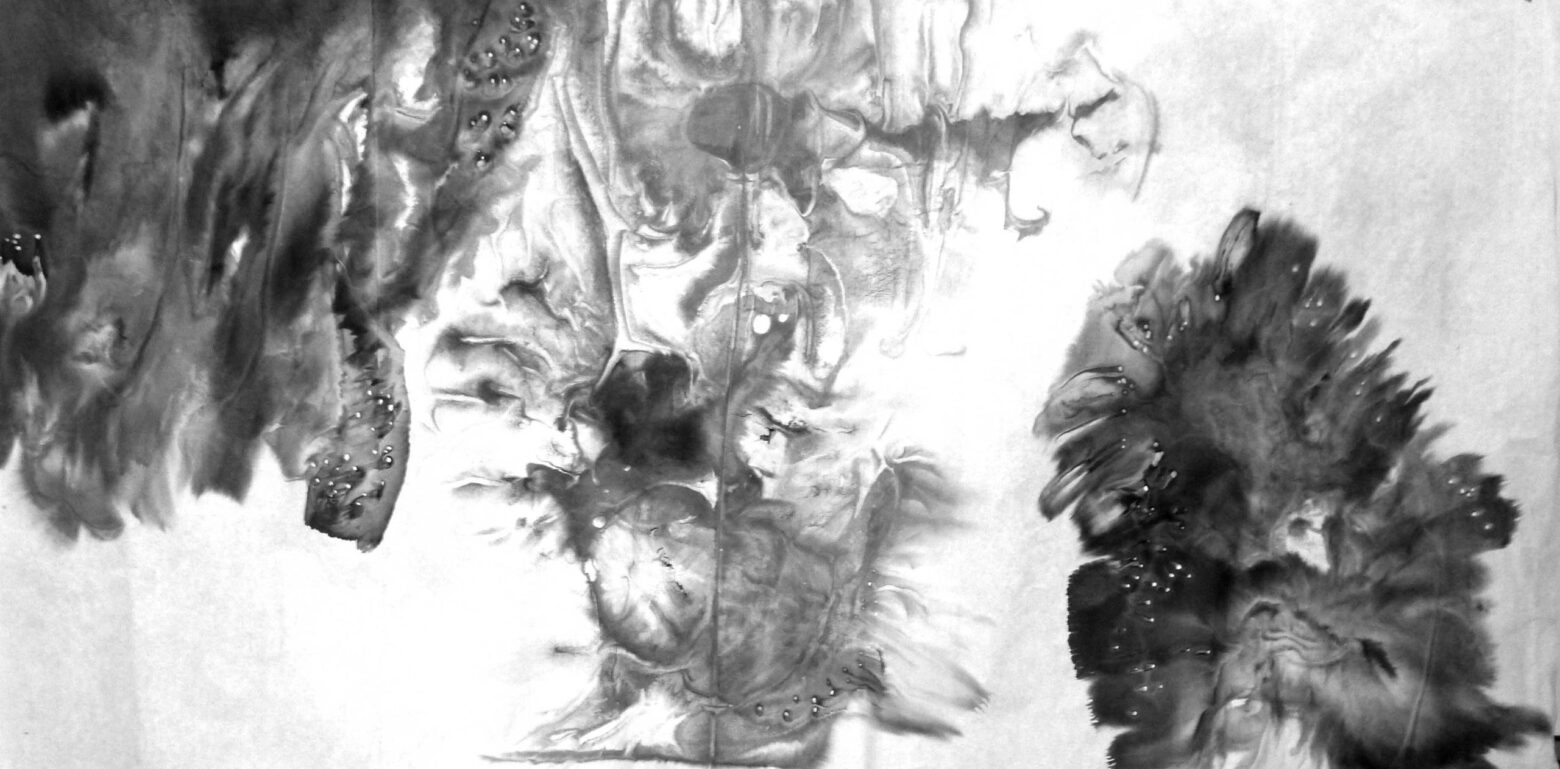When my fellow schoolmate Ming Ren returned from America, he brought back his new catalog of his most recent works. When friends visit from afar, there is always the sense of nostalgia borne by a familiar passing breeze. These new works allow one to experience that, as if one is floating among the clouds.
The word “you” or “float” has numerous connotations in Chinese tradition. It not only can signify the tassels on a flag but also the swaying movement of the tassels in the breeze. Each and every strand of the tassel is borne in the same direction by the wind, yet no two strands move quite the same way. “You” can also connote flowing water , and refreshing experiences similar to that of flowing water. And so, by visiting mountains and streams, one experiences life. And what is seen and felt are consigned to “you”. The ancient Chinese thinker, Zhuang Zi emphasized this concept in his xiao-yao-you. Roughly translated as the “unfettered experience,” the primary idea of the work is the molding of rigid human understanding and reason into something that freely transgresses the boundaries of the world. The “you” among the clouds, or the experience of floating among the clouds, precisely embodies this carefree connotation.
Ming Ren initially studied and worked at the China Academy of Art in Hangzhou. Even after he immigrated to the United States, he has contributed greatly to the art exchange programs between the China Academy of Art and various U.S. art institutions. Ten years ago, when I stayed with him briefly at his house in a suburb of San Francisco, I too experienced his life of isolated freedom. The isolation could be unbearable, if it were not for the artist had a universe of his own.Yet, Ming Ren was quite content. He traveled and worked all over America, and shuttled back and forth between the U.S. and China. When he was free, he returned to that empty nest of his and immersed himself in his private commune with the world and its creative energies. Ming Ren has studied acrylic materials for many years, and this time, he has combined several different materials and applied them to the canvas. Like in his own life, he allows ink and color to come together, allows the floating clouds to coexist with creative isolation.
It recalls freely expanding rivers of clouds. And ravines scoured by ink and color. It represents the streams and villages of the Five Dynasties, the mountain hermitages of Song and Yuan. What awe, respect and fear we once had for this traditional expression.
It recalls a quiet dusk over a vast desolate plateau. A special kind of cold and desolation, that only appears after harvests, has now been written on the edge of clouds That mysterious yet despondent white, pure and sparkling, like tear-filled eyes.
Studying Ming Ren’s works a little closer, the “floating of the clouds” becomes even more profound. However, there is still an atmosphere of cold and desolation in the vast and majestic floating clouds. The Chinese spirit traditionally values the eternal. When one seeks the eternal, one must reflect upon the past, as if the past is the bridge between the present and the future. This kind of reflection is always accompanied by a deep-seated sense of desolate cold. This feeling seems to be a kind of invitation, to allow people to return to what Zhuang Zi had said: “home is everywhere.” If this were true, then that cold desolation is certainly a kind of emptiness, an emptiness where the wind swirls and the clouds float. The art world of today seems too used to this kind of emptiness. So Ming Ren employed a cold desolation embodied within the vast and majestic ocean of flowing clouds used to emphasize a visual tactility, to enhance a sense of nostalgia.
The nostalgia in Ming Ren is perhaps very extensive. When faced with his works, it would seem that we are surrounded on all sides by desolate mountains, embraced by clouds, tempered by sadness and loss, embraced by a feeling of nostalgia emenating from a source of enduring poetic expression.
Xu Jiang
President, China Academy of Art August, 2009
